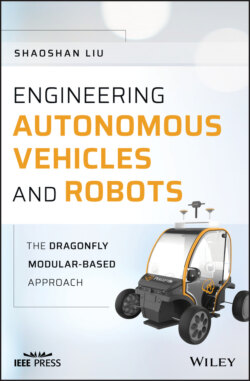Читать книгу Engineering Autonomous Vehicles and Robots - Shaoshan Liu - Страница 16
1.3.2 Modular Design
ОглавлениеIn the recent past, designs of autonomous driving computing systems have tended to be costly but affordable computing solutions are possible [9]. This has been made possible by the application of modular design principles which push computing to the sensor end so as to reduce the computing demands on the main computing units. Indeed, a quad-camera module such as the DragonFly sensor module [11] alone can generate image data at a rate of 400 Mbps. If all the sensor data were transferred to the main computing unit, it would require this computing unit to be extremely complex, with many consequences in terms of reliability, power, cost, etc.
Our approach is more practical: it entails breaking the functional units into modules and having each module perform as much computing as possible. This makes for a reduction in the burden on the main computing system and a simplification in its design, with consequently higher reliability. More specifically, a GPU SoM (System on Module) is embedded into the DragonFly module to extract features from the raw images. Then, only the extracted features are sent to the main computing unit, reducing the data transfer rate a 1000-fold. Applying the same design principles to the GNSS receiver subsystem and the radar subsystem reduces the cost of the whole computing system to less than $2000.
